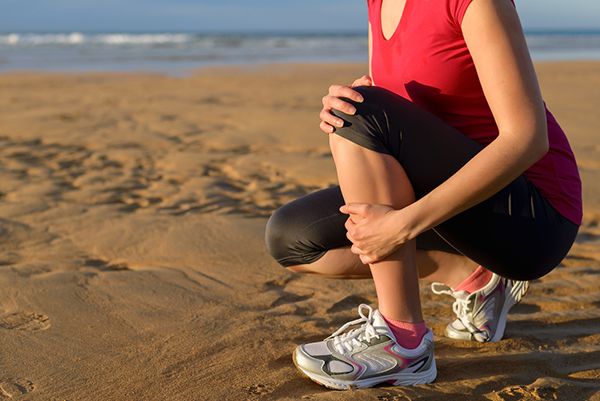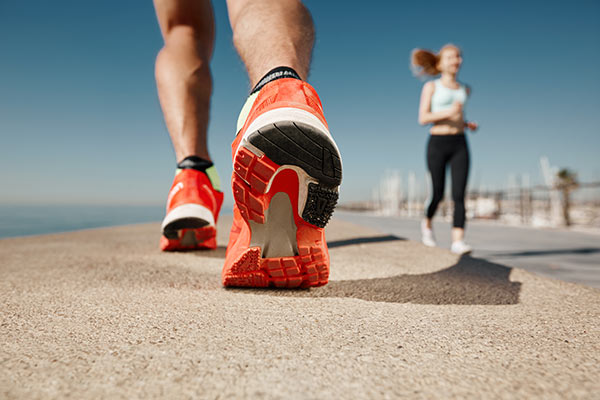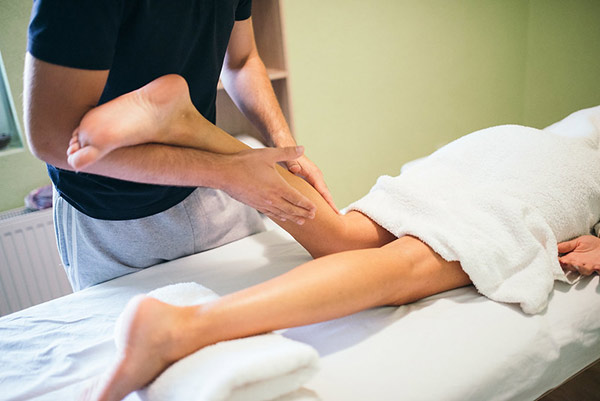When should I replace my running shoes?
Running in old shoes is a common cause of pain and injury that we see frequently. But how old is too old? Well, the answer like most things is, “it depends”. Let’s try to make it easier for you to figure it out.
Why do I need to replace my running shoes?
There are many running and even walking injuries that can be attributed to old or poorly functioning shoes. In very basic terms the 2 main properties we look for in a running shoe is shock absorption and support. Depending on your foot type and running style you will required these in differing amounts.
As a general rule shoes with better shock absorption in the heel lend themselves better to high arched, stiff feet. Conversely if you have flat flexible feet then you are more likely to need a shoe that is more supportive. Unfortunately as your shoe gets more worn out they loose both their shock absorption and supportive qualities. This can lead to problems with your plantar fascia, ankles, achilles, knees, hips or even lower back.
Soft vs firm
To make matters more confusing different shoes start with very differing qualities of shock absorption and support. As a general rule Nike, Adidas and Underarmour make soft but not very supportive shoes (as stated earlier, good for some people but not so good for others). I liken it to buying a new couch. A really soft couch might feel luxurious and comfortable in the store but after you sit on it for a few hours sometimes your back might start to hurt.
Asics, Mizuno, New Balance and Saucony tend to make more supportive shoes without compromising too much in shock absorbing qualities. But each shoe brand has different shoes within their range that have different qualities.
Brooks have previously been one of the more supportive shoe brands out there but in the last few years have definitely changed to the softer end of the spectrum.
Then you get to the shoes with rocker soles like Hoka’s that are both soft and supportive through bulk alone but fit the foot a little differently to the previously mentioned shoes.
This also bring in the debate a little around forefoot running versus heel striking. You can read a summation of the science of each here.
Anyhow, whichever you buy (and ideally get someone that knows feet and shoes to guide you), the shoes won’t last forever.
When do I replace my shoes?
There is varying opinions on how many kilometres a shoe should last. I’ve heard ranges anywhere between 600 and 1000km. Personally I don’t like to base it purely on distance but more on whether the shoe performing it’s function properly. Again, going back to the shock absorption and support principles.
Things that are likely to wear a shoe out faster:
- Heavier bodies – more weight compressing the shoe.
- Harder kilometres – a flat out 2 km run isn’t the same from an impact perspective as a 2 km shuffle. Similar running hills vs flat, grass vs concrete.
- Poor quality shoes to begin with – if they don’t fit your foot type, are too soft or too hard they are likely to not give the correct amount of support or shock absorbing qualities any more.
- Destructive feet – if you have VERY rigid or VERY flat feet you are asking the shoe to perform more work.
Signs a shoe is wearing out
Most people think of shoes like a car tyre. They check if they have plenty of tread left and that is all. Unfortunately the tread is one of the last parts of a shoe to deteriorate so isn’t the best diagnostic tool. It can be used however to prescribe the next set of shoes as seen here.
The upper part of the shoe made of the laces, mesh and heel cup provides a reasonable amount of support for your foot. It can become crushed and contorted well before the tread wears out. More often the midsole that provides all the shock absorption and support from the ground up is first part of the shoe to stop doing it’s job correctly as it takes the most abuse and does the most work.
What you might notice on the shoe:
- When the upper part of the shoe is worn it might look tipped over towards the inside slightly for feet that roll in.
- The heel and balls of feet feel less cushioned as the midsole has squished over time.
- Around the heel area of your shoe you might see “crumple lines” in the foam midsole where it has gradually compressed.
- The arch region of your shoe might bend more easily than it used to. A result of the central structure of the shoe softening over time.
- Lastly the grip might have worn out.
What you might notice on your body:
- Sore feet – it seems obvious but your contact points with the ground can become sorer as you shoe provides less cushioning. Particularly your heel and the balls of your feet as they have the most pressure on them during walking and running.
- Painful achilles or plantar fascia – as the midsole of the shoe breaks down and provides less support, your achilles and plantar fascia are potentially required to do more work. Consequently they may become overloaded and painful. For more information on plantar fasciitis have a read here
- Tired/tight calves that may be having to work harder as the shoe is doing less to provide support and recoil.
- Sore ankles if you have a tendency to roll in through the foot.
- Painful knees or hips also due to lack of support allowing the foot to roll in.
- Sore back from not having adequate cushioning to shock absorb as your heel strikes the ground.
If you are getting any of these symptoms it would be worthwhile visiting your physiotherapist or podiatrist and they can look at whether your shoes are contributing. They should also be able to give you advice about which shoes are suitable for your foot type.
References
https://www.mdpi.com/1660-4601/17/5/1707
https://www.tandfonline.com/doi/abs/10.1080/19424280.2018.1486462
https://www.tandfonline.com/doi/abs/10.1080/02640414.2019.1578449


